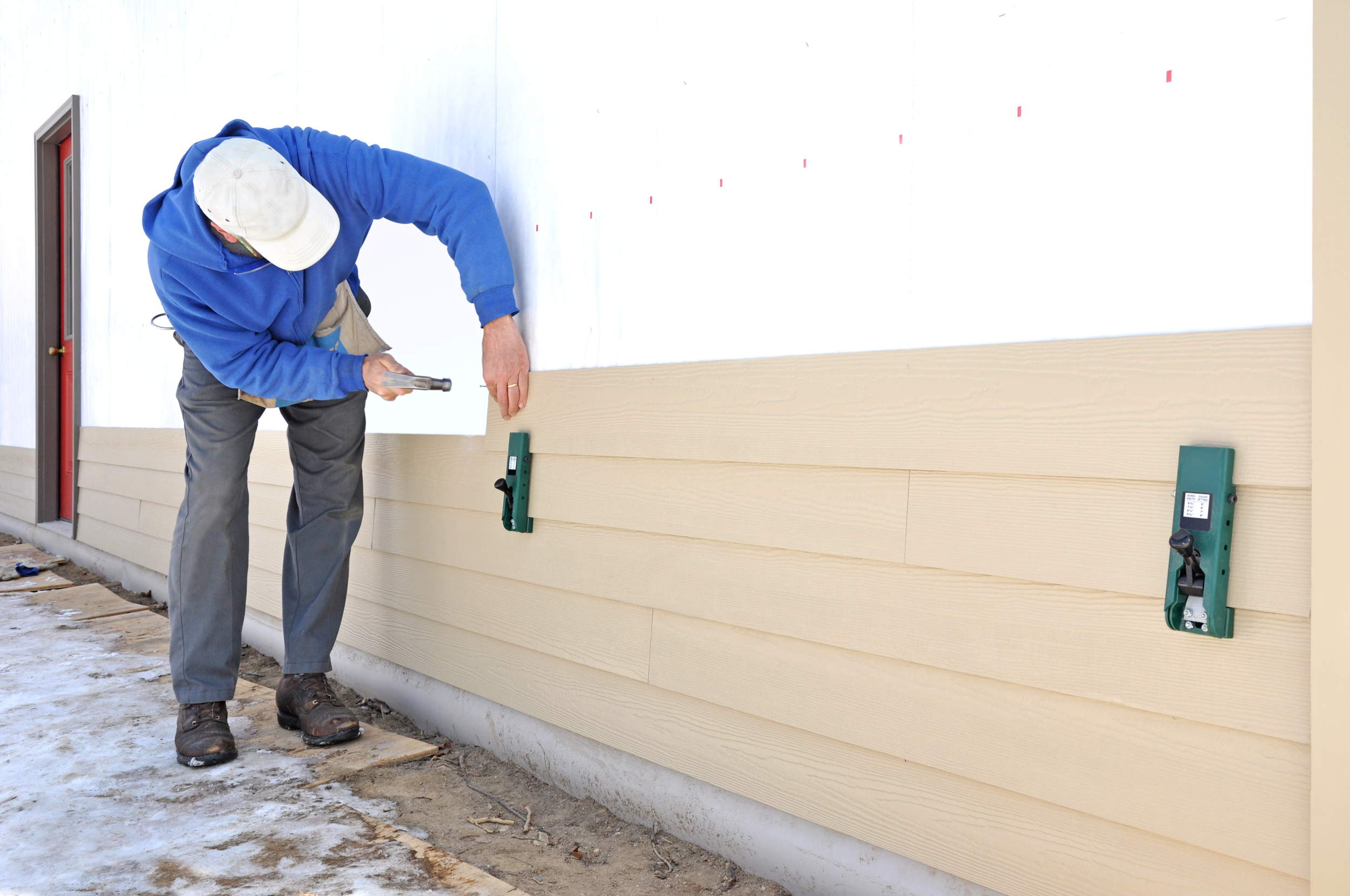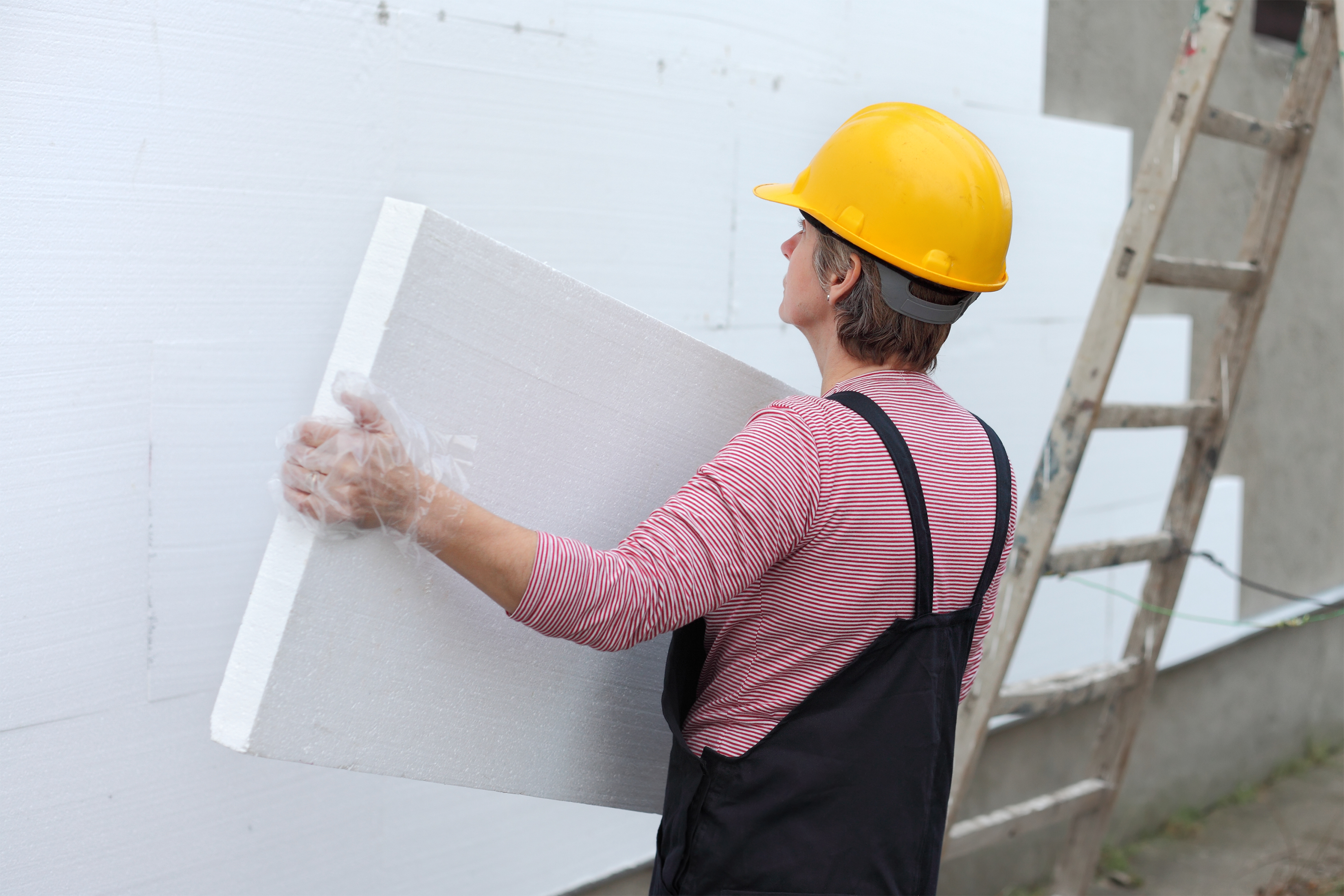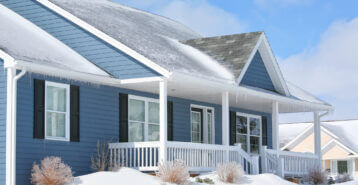Are you doing a siding project?
Modernize can pair you with three to four pros in your area, so you can compare options and save time and money.
Housewrap stirs up a lot of confusion. Does it prevent moisture? Inhibit mold? Help prevent drafts? It does all three. Depending on how it’s hung, housewrap can either act as a moisture or wind barrier. So, should you install housewrap under the siding? Read on to find out.
When used to slow winds, its job is to seal gaps and leaks in the OSB panels or plywood sheathing that makes up your home’s exterior walls. That keeps drafts from reaching your insulation and prevents heated and cooled air from seeping out through the walls. Although your siding is your home’s first defense against wind, many types have small gaps and cracks at the joints where siding panels line up. And that leads to air infiltration and seepage — the kinds of things that drive up energy costs.
Moisture barrier house wraps do the same thing but for rain, snow, and other outside moisture. They’re usually made with a permeable material that allows water vapor to travel through them — but keeps out water droplets. This helps them dry out quickly and prevents problems from mold that can happen when water sits on the surface.
If you’re thinking about installing housewrap during a siding project, here’s what you need to know.

How to Tell if Your Home Needs a Housewrap
Generally, a home’s construction method dictates the type of housewrap (if any) a building needs. A professional builder or contractor should always make the final call on housewrap — using it incorrectly can affect your home’s ventilation or cause mold to build up.
Additionally, where you live and your home’s climate will factor into housewrap, too. For instance, your contractor may install a vapor barrier on just one side of your home if you live in a cold climate. Housewraps and vapor barriers are usually addressed in local building codes (in fact, many places require some kind of weather-resistant barrier), so a professional contractor can also make sure that your home is up to code.
Find the Right Contractor for Your Siding Project
Whether you’re ready to begin your project now or need some expert advice, our network of contractors are here to help. With a few simple questions, we’ll find the best local professionals for you
Housewrap and Your Siding
To be clear, almost any kind of siding you can install provides an opportunity for water infiltration, but some types are particularly susceptible. In particular, homes sided with wood can usually benefit from housewrap barriers, since they have many seams where the boards overlap. Siding that’s assembled from large panels — such as vinyl or aluminum cladding — also makes a good candidate, too, since water can enter through cracks where the pieces are joined.
On the other hand, brick, stucco, and other masonry-based sidings can be used with housewrap — but your builder will need to use the right type. A micro-porous housewrap installed behind masonry can drive moisture into your home’s wall cavities.

Installing Housewrap With Rigid Foam Insulation
How Housewrap Affects Ventilation
Housewrap and Moisture and Mold
Find the Right Contractor for Your Siding Project
Whether you’re ready to begin your project now or need some expert advice, our network of contractors are here to help. With a few simple questions, we’ll find the best local professionals for you
Reviews from Real Homeowners
Welcome to Homeowner Resources! We are the Modernize blog. Modernize pairs more than 3 million homeowners a year with pre-vetted contractors in their area. This blog started because we believe homeowners should know everything about their homes, from how their HVAC works to which front door colors they might love. On Homeowner Resources, you can find information on every part of your home, right down to how you can negotiate with contractors to get the best price. Here's more about the blog.
Need a contractor? Learn more about how Modernize finds the right pro for you.





